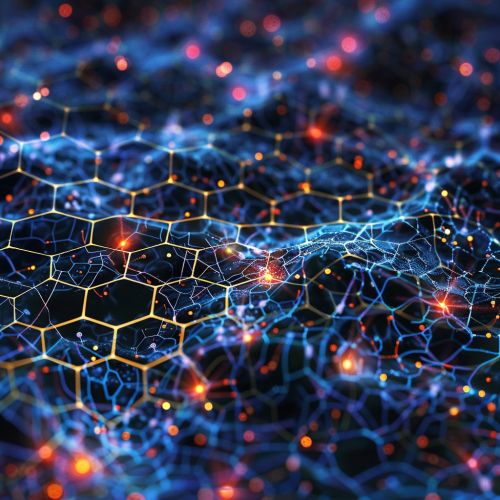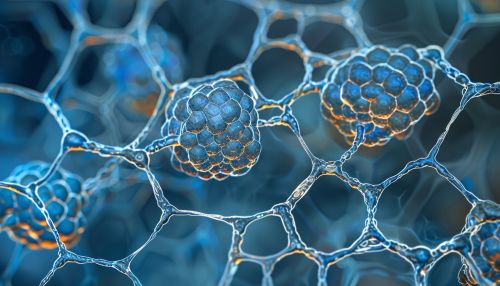Grid Cells
Introduction
Grid cells are a type of neuron found in the brains of many species, including humans, that are involved in spatial navigation and memory. These cells were first discovered in the entorhinal cortex of rats by Edvard I. Moser, May-Britt Moser, and their colleagues in 2005. Grid cells are notable for their unique firing patterns, which form a hexagonal grid across the spatial environment. This article delves deeply into the properties, functions, and significance of grid cells, as well as their relationship with other types of cells involved in spatial cognition.
Discovery and Initial Research
The discovery of grid cells was a significant milestone in neuroscience. The Mosers and their team used electrophysiological recording techniques to monitor the activity of neurons in the entorhinal cortex of freely moving rats. They found that certain neurons fired in a spatially periodic manner, creating a grid-like pattern of activity. This pattern was consistent regardless of the environment, suggesting that grid cells provide a universal metric for spatial navigation.
Properties of Grid Cells
Hexagonal Firing Patterns
Grid cells are characterized by their hexagonal firing patterns. When an animal moves through its environment, grid cells fire at multiple locations that form a hexagonal lattice. This pattern is invariant to the size and shape of the environment, indicating that grid cells encode spatial information in a metric-like fashion.


Scale and Orientation
Grid cells vary in scale and orientation. The scale refers to the distance between the firing fields, which can range from a few centimeters to several meters. The orientation of the grid can also differ, but within a single module of grid cells, the orientation is typically consistent.
Anatomical Distribution
Grid cells are primarily located in the medial entorhinal cortex (MEC), but they have also been found in other brain regions, such as the pre- and parasubiculum. The entorhinal cortex is a critical hub for spatial memory and navigation, interfacing with the hippocampus and other cortical areas.
Functional Role of Grid Cells
Path Integration
One of the primary functions of grid cells is path integration, a process that allows an animal to keep track of its position by integrating information about its movements. Grid cells provide a spatial framework that can be used to calculate the animal's current location based on its previous movements.
Spatial Memory
Grid cells also play a crucial role in spatial memory. They interact with place cells in the hippocampus to form a cognitive map of the environment. This map is essential for tasks such as navigation, foraging, and remembering the locations of important resources.
Interaction with Other Cell Types
Grid cells interact with various other types of neurons, including place cells, head direction cells, and border cells. Place cells, located in the hippocampus, fire when an animal is in a specific location. Head direction cells encode the animal's head orientation, while border cells fire when the animal is near the boundaries of its environment. Together, these cells form a comprehensive system for spatial navigation and memory.
Mechanisms Underlying Grid Cell Function
Neural Oscillations
One hypothesis for the mechanism underlying grid cell function involves neural oscillations. Specifically, the theta rhythm, a type of brain wave found in the hippocampus and entorhinal cortex, is thought to play a role in the generation of grid patterns. Oscillatory interference models suggest that the interaction between multiple oscillators with different frequencies can produce the hexagonal firing patterns observed in grid cells.
Synaptic Plasticity
Synaptic plasticity, the ability of synapses to strengthen or weaken over time, is another critical factor in grid cell function. Long-term potentiation (LTP) and long-term depression (LTD) are mechanisms that can modify the synaptic connections between grid cells and other neurons, allowing for the fine-tuning of spatial representations.
Computational Models
Several computational models have been proposed to explain the properties and functions of grid cells. These models range from continuous attractor networks to oscillatory interference models. Each model offers different insights into how grid cells might encode spatial information and interact with other neural systems.
Continuous Attractor Networks
Continuous attractor network models propose that grid cells form a network that can maintain a stable representation of the animal's position. These models suggest that the hexagonal grid pattern arises from the intrinsic connectivity of the network, which allows for smooth transitions between different firing states.
Oscillatory Interference Models
Oscillatory interference models, as mentioned earlier, propose that the interaction between multiple neural oscillators can generate the hexagonal firing patterns of grid cells. These models emphasize the role of temporal dynamics in the formation of spatial representations.
Clinical Implications
The study of grid cells has important clinical implications, particularly for understanding and treating neurological disorders that affect spatial memory and navigation. Conditions such as Alzheimer's disease and other forms of dementia often involve impairments in the entorhinal cortex and hippocampus, leading to deficits in spatial cognition.
Alzheimer's Disease
In Alzheimer's disease, the entorhinal cortex is one of the first regions to show signs of neurodegeneration. This degeneration can disrupt the function of grid cells, contributing to the spatial disorientation commonly observed in patients. Understanding the role of grid cells in spatial memory could lead to new therapeutic strategies for mitigating these symptoms.
Epilepsy
Epilepsy is another condition that can affect the entorhinal cortex and hippocampus. Seizures in these regions can disrupt the normal functioning of grid cells, leading to impairments in spatial navigation and memory. Research into the mechanisms of grid cell function could provide insights into how to better manage and treat epilepsy.
Future Directions
The study of grid cells is a rapidly evolving field with many exciting avenues for future research. Advances in neuroimaging, electrophysiology, and computational modeling are likely to yield new insights into the mechanisms and functions of grid cells.
Neuroimaging Techniques
Modern neuroimaging techniques, such as functional magnetic resonance imaging (fMRI) and two-photon microscopy, allow researchers to study grid cells in vivo with unprecedented resolution. These techniques can be used to investigate how grid cells interact with other neural systems and how their activity is modulated by different behavioral and environmental factors.
Genetic and Molecular Approaches
Genetic and molecular approaches are also being used to study grid cells. Techniques such as optogenetics and chemogenetics allow researchers to manipulate the activity of specific neurons and observe the effects on spatial cognition. These approaches can help to identify the molecular pathways that underlie grid cell function and their role in neurological disorders.
Artificial Intelligence and Robotics
The principles of grid cell function are being applied to the fields of artificial intelligence and robotics. By mimicking the spatial navigation systems of the brain, researchers are developing more efficient algorithms for autonomous navigation and spatial memory in robots. These advancements have potential applications in a wide range of industries, from autonomous vehicles to search and rescue operations.
Conclusion
Grid cells are a fundamental component of the brain's spatial navigation system. Their unique hexagonal firing patterns provide a universal metric for encoding spatial information, and they interact with other types of neurons to form a comprehensive cognitive map of the environment. The study of grid cells has important implications for understanding spatial memory, neurological disorders, and even artificial intelligence. As research in this field continues to advance, we can expect to gain even deeper insights into the mechanisms and functions of these remarkable neurons.
